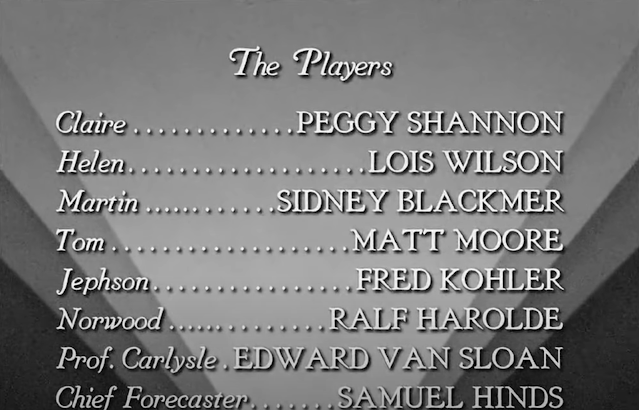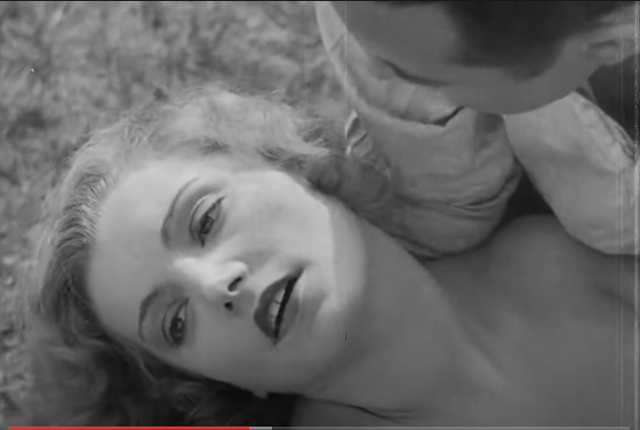Well, I knew that Fob James, Jr., acted like a monkey while governor, but I didn't realize until recently that his father had actually appeared as the male lead in a silent movie in 1927. Let's investigate.
That film was Stark Love, set in the Great Smokey Mountains where it was filmed near Robbinsville, North Carolina. Directed by Karl Brown and written by him and Walter Woods. the movie was financed by a major Hollywood studio--what is now Paramount Pictures--and intended as a realistic portrait of people in Appalachia.
To that end the two lead characters Rob Warwick and Barbara Allen are played by non-professional actors, Forrest Hood James, Sr., and Helen Mundy. Director Brown wanted to tell a story about mountain people that would be realistic in a way unseen before in Hollywood films. "Hillbilly" movies had been popular but full of stereotypes. The article about Mundy linked previously has some interesting background about casting and filming Stark Love. Numerous comments about the film can be found here.
Brown located his two leads in Knoxville, Tennessee. Mundy was a 16 year-old high school student. Filming was done so far in the backwoods a new road had to be constructed. In the story Rob is the son of a harsh father who mistreats his mother. Rob learns to read and wants a better life for himself and the neighbor's daughter he's attracted to, Barbara [Mundy]. After various hardships and the death of his mother, Rob and Barbara escape their isolated community for a better life. Director Brown portrayed stereotypes of his own in his film; he had no direct knowledge of or experience with Appalachian mountain people.
According to one source, [Ralph Draughon, Jr., Delos Hughes & Ann Pearson, Lost Auburn: A Village Remembered in Period Photographs. New South Books, 2012, p. 143] the premier of Stark Love took place at the first commercial movie theater in Auburn, the original Tiger Theater, which operated from 1926 until 1928. Owned by Foreman Rogers, the business was located on North College Street in an old storefront. The date was September 21-22, 1927; admission was 35 cents for adults and 15 cents. In contrast, the IMDB says the film was released on February 28, 1927, and in those days films took time to make their way around the country due to limited numbers of prints, slower transportation, etc. I'm just not sure about the "premier" discrepancy.
Stark Love was presumed to be one of the many lost silent films until a copy was discovered in a Czech archive in 1968 by film historian Kevin Brownlow. Although still little seen today, it was added to the Library of Congress' National Film Registry in 2009. A blurry copy is available on YouTube.
Neither lead ever appeared in another film. Mundy married, moved to Michigan and died in 1987.
His Word War II draft card [found via Ancestry.com] tells us a bit about Forrest James, Sr. He was born in Waverly, Alabama, on August 10, 1905, and married to Rebecca Ellington James. He was 5'9" tall, weighed 160 and had brown hair and blue eyes. Karl Brown offered to take James to Hollywood, but he followed his mother's wishes and returned to finish college at what is now Auburn University. James and his twin brother William both lettered in three sports at Auburn. James then taught high school and coached baseball before pursuing a business career. He died July 2, 1973, in Birmingham and is buried in Garden Hills Cemetery in Opelika.
By the way, I can highly recommended Brownlow's massive 1968 book The Parade's Gone By as a wonderful history of silent filmmaking.
FURTHER READING
Articles by John White:
"Hollywood Comes to Knox County," Kentucky Humanities, Spring 2010: 29-34. Published by the Kentucky Humanities Council.
"Forrest James, Hollywood's Reluctant Star." Alabama Heritage. Number 93, Summer 2009: 44-53. Published by the University of Alabama, the University of Alabama at Birmingham, and the Alabama Department of Archives and History.
"Myth and Movie Making: Karl Brown and the Making of Stark Love." Film History, an International Film Journal. Volume 19, 1 (2007): 49-57. Published by Indiana University.
This book has a long chapter on the film:
Williamson, Jeremy Wayne. Hillbillyland: What the Movies Did to the Mountains and what the Mountains Did to the Movies. North Carolina: UNC Press Books, 1995.






























































